- Home
- Adam Roberts
The Wonga Coup Page 10
The Wonga Coup Read online
Page 10
In the annals of ridiculous coup attempts, the one by Tommy Lynn Denley, an American former customs agent and one-time policeman in Panama, must count as one of the most stupid. Homer Simpson could have done a better job. Denley recruited thirteen others from small American towns like Sugar Tree, Tennessee and Oak Forest, Illinois. He apparently hated left-wing rule in Latin America. But money was also a big concern. There were rumours that a Dutch foundation would pay ‘hundreds of millions’ of dollars for the removal of Suriname’s Marxist regime. Financiers were apparently pledged tenfold returns. That rate seems to be the standard to lure investors to coup plots. Whatever the fantasy of reward, operational funds were short. An original plan had called for thirty hardened fighters to fly via Nicaragua. That was later dropped in favour of a smaller group flying direct from the United States.
But the FBI infiltrated the plot early on. Undercover agents even chartered the plane and arranged other transport for the hard-up conspirators. Just before departure, Denley and his men were separated from their guns and arrested. They later pleaded guilty to various federal offences. Newsweek magazine noted in 1986: ‘Amateur mercenaries have a wellestablished tendency to fall for crazy plots and get in over their heads … in the course of recruiting, seeking financial backing and buying munitions for the coup, Denley made so many waves that he picked up almost as many federal infiltrators as genuine recruits …’
Denley perhaps got his idea from a similar plot four years earlier, also in the United States. In 1981, ten white supremacists from Canada and the United States vowed to take over the Caribbean island of Dominica. A man called Michael Perdue dreamt up ‘Operation Red Dog’, to sail a team of hired guns 3,200 km (2,000 miles) from New Orleans on a yacht, the Manana. A former head of the Ku Klux Klan in Canada took the code name ‘Red Dog 3’ and served as a forward agent, to guide the mercenaries to a darkened dock with a flashlight. But, vain and careless, they bragged of their plans to a Canadian radio station. One explained: ‘I consider myself a little bit of a rebel in society … And I’m also, of course, going to benefit financially from it, which will afford me a good life … I hope I’ll be fixed for the rest of my life after Dominica.’ They also gave documents and more interviews to a Canadian woman who planned to write a book about the escapade. They said they would use assault rifles, 12-gauge shotguns and sticks of dynamite wrapped with roofing nails to ‘blast’ police guards and seize the local radio station and government. They expected little resistance from the ninetynine men of Dominica’s army.
But the working budget was small. An ex-minister of Dominica who wanted his old job back may have pledged funds, perhaps $150,000. The island would be used as a base to promote white supremacist views and the mercenaries would make money, too, by selling false passports, running guns and logging trees. There were elaborate plans for an airport, a casino, hotels, off-shore banking and – an imaginative touch – a holiday playground and money-laundering venue for American mobsters. One Canadian mafioso paid $10,000 upfront. In return he expected to become a major in the defence force. But police heard of the plot, infiltrated the loose-tongued gang and arrested Perdue and the rest before they boarded the Manana. They were tried and jailed.
These two cases tell an obvious story: low-cost rent-acoups rarely work. It is much the same in Africa. Toppling someone else’s government is tricky and expensive. Frederick Forsyth was alleged by the Sunday Times to have put £100,000 (the equivalent of roughly ten times that today) into the 1973 plot against Equatorial Guinea. (He now admits giving some cash, but claims it was only for information.) Three years on, Bob Denard – as mentioned earlier – had a budget of roughly $1 million, probably from the French government, to seize power in Benin with ninety men. He failed, but succeeded in the Comoros a couple of years later with a smaller team, a fishing trawler and a crate of good champagne. Mike Hoare originally budgeted $5 million for his coup attempt in the Seychelles, though that dropped as his plans for 200 soldiers were reduced to a few dozen and a shoestring budget. Hoare concluded that coups ‘cannot be carried out on the cheap. The unexpected beats you. It is horrifyingly expensive.’
As lessons in failure, these attempts might have been useful for the Wonga Coup plotters. Doing the job well required money. If you lack funds, you are more vulnerable to other problems. There is the need to recruit, train, accommodate and sustain a fighting force that is loyal only to cash. The bigger the army and the more training needed, the greater the cost. Reconnaissance trips to the target country are essential. More elaborate efforts entail setting up a front company, or some other cover.
Then there is transport. Amateur rent-a-coups are more likely in small countries (Benin, Suriname) and island ones (the Comoros, the Seychelles, Dominica, Equatorial Guinea). That means crossing the sea. Hoare’s cheap ruse – disguising his fighters as rugby-playing tourists and buying plane tickets to the Seychelles – meant he lacked a means of escape when things went sour. As Forsyth said in 2005, attackers should approach by sea: ‘A ship can drop over the horizon and be entirely on its own.’ There are no controls on the waves, but there is time to test weapons and give late orders. Bob Denard, in the Comoros, and the Dominica plotters of Operation Red Dog favoured that method. But finding and buying a suitable craft is not easy. Fishing trawlers were initially preferred by Hoare, though he later dropped the idea. Mann and du Toit bought at least one trawler, too. Flying your own plane is the other option, and a few aircraft – DC3s in the past, the Boeing 727 more recently – are popular among hired guns.
Weapons are moderately costly. In Forsyth’s meticulously researched novel he said an attack force should overthrow the government in Equatorial Guinea, then a larger army would keep power: ‘The [attack] force should not be less than a dozen men, armed with mortars, bazookas and grenades, and all carrying as well submachine carbines for close-quarters use.’ Attackers expect to use surprise and limited force, not to engage in many battles or prolonged fighting. Plots usually involve elements of an invasion, but should unfold quickly and quietly. Each soldier needs a rifle, plus ammunition. One can be bought almost anywhere in Africa for the price of a good restaurant meal. A machine gun or two, and some grenades, might be thrown in. If you are French, champagne is essential. Even cut-price attackers are likely to need radios, first aid kits and other basics, plus appropriate clothing. Bigger spenders add items like a helicopter gunship. All attackers expect to be better trained, organised and led than any defenders. In order to keep power, the army will need heavier weapons, but these might be seized in the country of occupation.
There are incidental costs. Some information comes from the advance guard, but other material is bought from rag-and-bone intelligence men. There are bribes to pay, perhaps so no one interferes when the mercenaries depart for the attack. While a scheme is prepared, there are costs of entertaining contacts, communications and other sundry items. Then money goes astray. After all, this is about plotting a big, if international, crime. Ordinary bankrobbers swindle each other, or pocket funds that should have paid for the getaway car. Coup plotters are no different. No one audits the finances. No one can run to the police if their investment is stolen. Only the fabled honour among gentlemen thieves, plus a shared hunger for success, keep conspirators in line. Many of those even loosely involved in the Wonga Coup were afterwards quick to talk, somewhat bitterly, of money owed them.
Nobody, perhaps not even the organisers of the Wonga Coup, is exactly sure of its budget. Estimates range from $3 million to $20 million. James Kershaw kept the closest eye on Mann’s finances, but claims he thought the money was for a mining project in Congo. He refuses to talk in detail. Mann was usually involved in several different business schemes at once and was casual about his accounts. Money flowed between his companies, serving different ends. So it is hard to prove that a particular deposit was intended for a coup plot rather than, say, for a legitimate gold mining project in South America.
But the plotters used at least $3 million, pr
obably more. Where did they find it? The best source of funding, as Bob Denard knew, is a friendly government. For his Seychelles attack Hoare got limited aid – weapons and training grounds – from apartheid South Africa. But few freelance plotters enjoy such backing. A rich plotter might fund everything himself. But with risky projects it is natural to share the gamble. Some treat it as a business. Entrepreneurs raise capital with bank loans, by mortgaging property, selling shares or getting venture capitalists involved. Business-minded buccaneers do the same. Francis Drake used some of his own money to fund fleets to plunder Spanish gold. But he also promised good returns to individuals – including his sovereign, Queen Elizabeth – who put up matching funds. Henry Morton Stanley, the nineteenth-century explorer-conqueror, funded his trips to Africa with sponsorship from British and American newspapers. Later, a single investor, Belgium’s King Leopold, paid him to stake out a massive private empire in central Africa, now the Democratic Republic of Congo.
Mann followed Drake: he put in funds himself, used savings, possibly having taken a loan against shares in a diamond mining firm in Angola and – he claimed to other plotters – having raised a mortgage on his London home. As an investor he could claim a large share of the riches afterwards. But he also asked friends and colleagues – very private investors – to help. An inner circle were also plotters. Equatorial Guinea accused Ely Calil, the wealthy Lebanese–Nigerian oil trader, of being the lead financier of this sort, though he stoutly denied it. David Tremain faces arrest in South Africa, where investigators say he helped finance the plot, but also attended planning meetings and more. He has stayed silent on the matter, issuing no comment or denial. A South African charge sheet, which explains what they would be charged with if arrested, accuses him and Greg Wales of ‘raising funds to finance’ mercenary activities, conspiring with Mann and making plans to install a new government in Equatorial Guinea. Then a second circle of financiers, with less precise – if any – knowledge of the scheme, were promised an excellent rate of return, perhaps tenfold, if they asked few questions. Henry Page, a lawyer acting for Equatorial Guinea’s government, later suggested: ‘It sounds to me like a gentleman’s plot from the eighteenth century. You each put in 100,000, then try to get it back tenfold.’ This circle included a fascinating cast of investors.
A Chain of Investors
Mann wrote a detailed confession in March 2004 giving useful information about money. He – and his lawyers – say this document should be ignored. It was obtained under duress and perhaps after torture. It was not used in court against Mann, presumably for these problems, though a lawyer acting against him in Britain denied torture took place. He noted the free-flowing handwriting did not suggest ‘someone treated like Guy Fawkes’. Though obtained under dubious circumstances, none suggested the confession was fabricated.
It shows Mann preoccupied with a ‘shortage of funds’ and costly payments during his preparations. He wrote of meeting Moto and the plan to ‘escort’ him home: ‘my role was to be concerned chiefly with the military and security aspects’. He recalled that, by June 2003, ‘The whole programme, in terms of my part, then stalled through lack of funds.’
Yet later that year the money worries eased. Mann signed two investment agreements in mid November on behalf of his company, Logo Logistics Limited. Logo had registered offices in the British Virgin Islands, but operated from an address in Guernsey, a tax haven in the English Channel. The two deals are similar, each five pages long with a dozen bland articles of agreement. The interesting bit is the short preamble (identical in each) which specifies that each investor will pay $5 million to Logo Logistics – ‘The Company’ – to chase intriguing but ill-defined schemes in west Africa:
The Company has identified potential projects in the fields of mining exploration, commercial sea fishing, aviation (cargo and PAX [passengers]), helicopter charter and commercial security, in the following countries: Guinea Republic [a separate country], Sierra Leone, Liberia and Angola.
An initial investment of USD 5,000,000.00 (American Dollars Five Million) is required from The Investor by The Company to evaluate and initiate the above mentioned projects, which have been identified by the company.
There was no mention of a coup, though ‘commercial security’ and the other operations were precisely what Mann planned once Moto became president of Equatorial Guinea, as mentioned in the July contracts. ‘Mining exploration’ might refer to the oil industry. Du Toit was already setting up the fishing and aviation firms. The timing was intriguing: just when Mann was scrabbling for investors in his coup attempt, he signed two deals worth a total of $10 million. Though care was taken not to leave an obvious paper trail – there is no specific mention of Equatorial Guinea – these funds would have gone to Mann’s firm and would have been used in the businesses that du Toit and Mann were creating.
Who agreed to invest? Crause Steyl, the pilot and plotter, recalls Mann saying he ‘was approached, I think, by a Lebanese consortium. They promised him money.’ The names on the investor agreements gave clues. One was signed on behalf of Verona Holdings Limited, registered and based in Vaud, Switzerland. The other was signed on behalf of Asian Trading and Investment Group SAL, registered in Beirut, Lebanon. For those seeking a Lebanese connection to the Wonga Coup, this firm became the centre of investigation. One man, Karim Fallaha, appears here. Records of a meeting of Asian Trading on 27 June 2003 show Fallaha held a post in the company. Other plotters later made references to him. He eventually showed up in person in the Canary Islands in February and March. Calil and Fallaha are said to be acquaintances, though Calil denies any links to Asian Trading.
Soon after signing these agreements Mann passed money down the chain to du Toit. On 5 December he guaranteed a loan of $2 million to du Toit’s firm, Triple Options Trading, for unspecified ‘projects in the fields of commercial sea fishing, and commercial safety, in the Republic of Equatorial Guinea …’ The deal was signed by both men. Repayments would begin on 1 May 2004, when both Mann and du Toit expected to be much richer. In the mean time Mann repeatedly provided du Toit with cash. In December the fishing trawler, the Roslyn Joy, left Cape Town and sailed up the Atlantic coast of Africa. Ten days later it arrived in Equatorial Guinea. Early in December, du Toit agreed to provide various ‘integrated risk, agriculture and fishing’ services to the government. The same month he arranged with a German businessman called Gerhard Merz to broker two cargo aircraft, an Ilyushin II-76 from Ukraine and an Antonov.
Du Toit needed the planes urgently. On 27 November he had struck a deal with the Equatorial Guinea government to form an air transport cargo firm. His business proposal said Pan African Airlines and Trading Company, or PANAC, would provide much-needed links with nearby countries, using huge Russian aircraft, notably the Iluyshin II-76 (with an Armenian crew). Based in Bata, on the mainland bit of the country, customers could rent the aircraft for $6,000 per hour. But the PANAC business document had a curious conclusion. After explaining the aviation business and the use of the Iluyshin, it offered:
10. Triple Options Trading 610 GE SA will make a proposal towards the president concerning security. Part of the proposal will include the donation of 6 (six) Toyota Land Cruiser pick-up trucks by the SA partners, to be utilized by either the police or the military. These vehicles can be transported with the IL-76 directly to EG, pending the approval of the security proposal.
Why give the president six Land Cruisers? It appeared to be a gesture of goodwill, or perhaps a bribe. In fact, it was an early plan for the Wonga Coup.
On 13 December at Wonderboom airport, near Pretoria, Mann met du Toit, Greg Wales and Crause Steyl. They moved to a holiday resort east of Pretoria where – probably over beers and steaks – they discussed the coup. Steyl recalls the plan they discussed at the time. It explains why du Toit had offered six cars to the president. The luxury vehicles would be loaded into the hold of the Ilyushin and flown to Malabo, with some weapons (bought in Uganda) hidden on the same plane. Obiang w
ould be lured to the airport by the cars and, as he inspected them, the second plane, the Antonov, would land in Malabo. It would be packed with combat-ready mercenaries, also flown over from Uganda, who would rush the apron, guns trained on the president and his guard. Those on the Ilyushin would pull out their own weapons and ‘apply violent measures’, snatch Obiang and install Moto. Steyl explains: ‘We had this plan for Obiang. We would take him cars, but first pick up our guys from Uganda. Then at the airport we would grab Obiang, and Moto could come in and have a few cars.’ Obiang’s life expectancy would be short. ‘If the Moroccan guard had resisted, and if he had come in the line of fire, then as sure as fuck he’d have been killed. Like any buffalo, there is a time to shove him out. Then Moto would come in.’
The plan had much to recommend it. It was bold and simple. Obiang would be vulnerable out of his palace, protected only by bodyguards. The attacking soldiers and their weapons could easily reach the point of use, at the airport. A helicopter would also be useful as an air ambulance or as a gunship. Mann said a financier was already lined up for that. With planes and a helicopter, the attackers would be mobile, heavily armed and could escape if things went wrong. But there were drawbacks, too. It would happen by day, in the open, watched by anyone who happened to be there. Obiang’s Moroccan guards were notoriously twitchy on the move. And, although the plotters probably did not know this, plans to kill Obiang at the airport had been exposed at least once before.

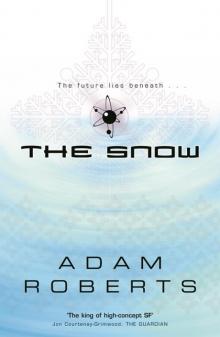 The Snow
The Snow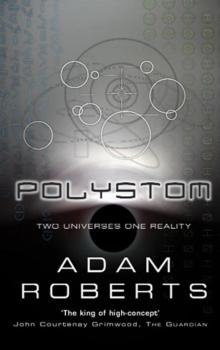 Polystom (Gollancz Sf S.)
Polystom (Gollancz Sf S.) The Parodies Collection
The Parodies Collection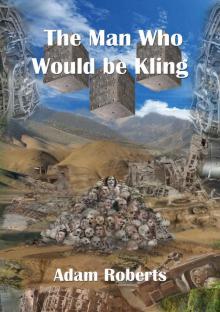 The Man Who Would Be Kling
The Man Who Would Be Kling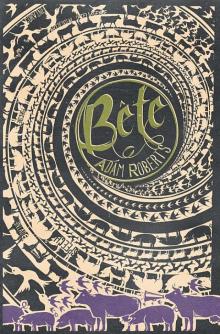 Bête
Bête The Lake Boy
The Lake Boy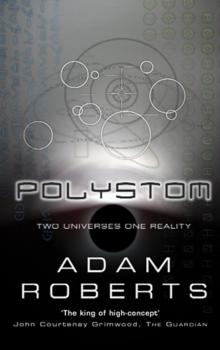 Polystom
Polystom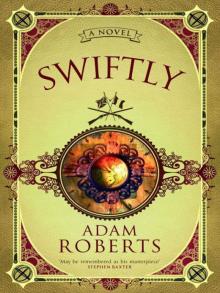 Swiftly: A Novel (GollanczF.)
Swiftly: A Novel (GollanczF.)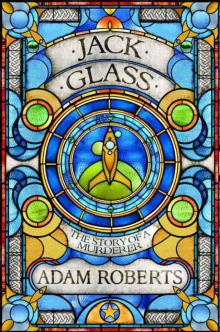 Jack Glass
Jack Glass Haven
Haven The Riddles of The Hobbit
The Riddles of The Hobbit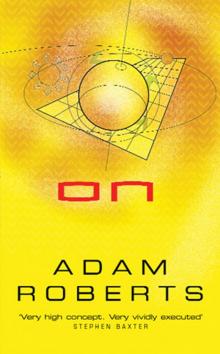 On
On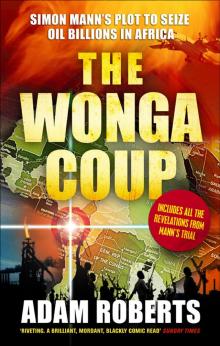 The Wonga Coup
The Wonga Coup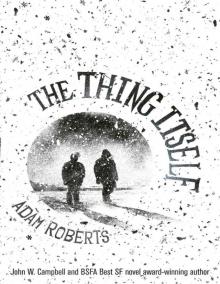 The Thing Itself
The Thing Itself Anticopernicus
Anticopernicus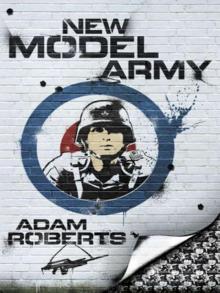 New Model Army
New Model Army Doctor Whom or ET Shoots and Leaves: The Zero Tolerance Approach to Parodication
Doctor Whom or ET Shoots and Leaves: The Zero Tolerance Approach to Parodication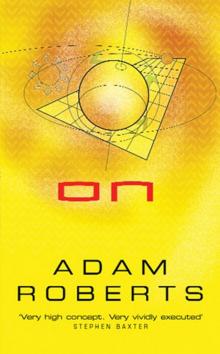 On (GollanczF.)
On (GollanczF.)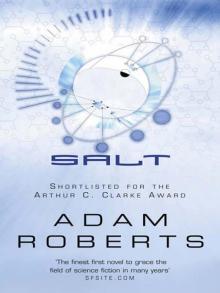 Salt
Salt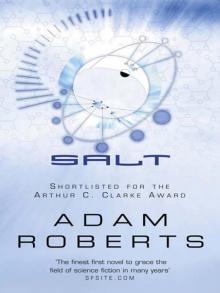 Salt (GollanczF.)
Salt (GollanczF.)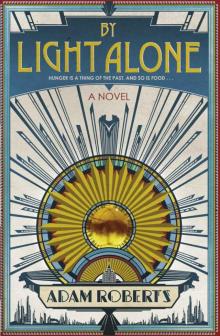 By Light Alone
By Light Alone Yellow Blue Tibia
Yellow Blue Tibia Gradisil (GollanczF.)
Gradisil (GollanczF.)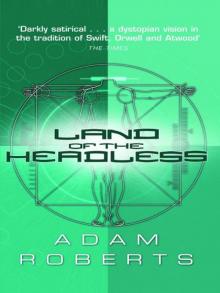 Land Of The Headless (GollanczF.)
Land Of The Headless (GollanczF.) Adam Robots: Short Stories
Adam Robots: Short Stories Twenty Trillion Leagues Under the Sea
Twenty Trillion Leagues Under the Sea